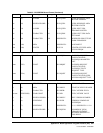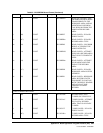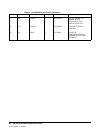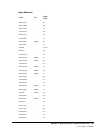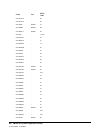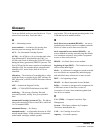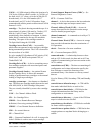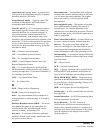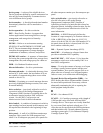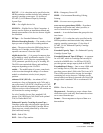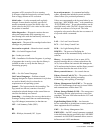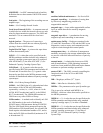
Glossary 655
1st ed., 6/30/04 - 312579601
Glossary
Terms are defined as they are used in the text. If you
cannot find a term here, check the index.
A
AC— Alternating current.
access method— A technique for moving data
between processor storage and I/O devices.
ACS— See Automated Cartridge System.
ACSid— An ACSid (acs-id) is a hexadecimal value
from 00 through FF that identifies the LMU. An
ACSid is the result of defining the SLIALIST macro
during the library generation (LIBGEN) process. The
first ACS listed in this macro acquires a hexadecimal
identifier of 00, the second acquires a hexadecimal
identifier of 01, and so forth, until all ACSs are
identified.
allocation— The selection of a cartridge drive, either
inside the library or outside (by the HSC software for
HSC allocation, or MVS for MVS allocation without
the HSC).
APF— Authorized Program Facility.
APPL— VTAM APPLID definition for the HSC.
archiving— The storage of backup files and
associated journals, usually for a given period of
time.
Automated Cartridge System (ACS)— The library
subsystem consisting of one or two LMUs, and from
1 to 16 attached LSMs.
automated library— See library.
automatic mode— A relationship between an LSM
and all attached hosts. LSMs operating in automatic
mode handle cartridges without operator
intervention. This is the normal operating mode of an
LSM that has been modified online.
B
basic direct access method (BDAM)— An access
method used to directly retrieve or update particular
blocks of a data set on a direct access device.
basic sequential access method (BSAM)— An
access method for storing and retrieving data blocks
in a continuous sequence, using either a sequential
access or direct access device.
BDAM— See Basic direct access method.
beginning-of-tape (BOT)— The location on a tape
where written data begins.
block— A collection of contiguous records recorded
as a unit. Blocks are separated by interblock gaps,
and each block may contain one or more records.
BOT— See beginning-of-tape.
BSAM— See Basic Sequential Access Method.
buffer— A routine or storage used to compensate for
a difference in rate of data flow, or time of
occurrence of events, when transferring data from
one device to another.
C
CA-1 (TMS)— Computer Associates Tape
Management
System— Third-party software by Computer
Associates International, Inc.
CAP— See Cartridge Access Port.
capacity— See media capacity.



